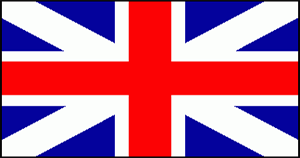Battle of Beaver Dams
June 24, 1813 at Beaver Dams, Upper Canada



| |||||||||||||||||||||
|
British Lt. James FitzGibbon, was stationed at the Decew Falls supply depot and was sent into the area to cause trouble and harrass the American forces there. The American commander at Fort George, Gen. John Boyd, decides that FitzGibbon must be captured or driven out of the area.
Lt. Colonel Charles Boerstler leaves Fort George and travels down the River Road with a force of about five hundered and fifty men and three cannon. The men under his command consist of his own regiment, the 14th U.S. Infantry, also known as the Maryland Infantry, a company of the 23rd U.S. Infantry, and a comapany of the 6th U.S. Infantry. In addition to these troops there were 20 members of the 2nd Light Dragoons and a company of Light Artillery.
They arrive at the the village of Queenston in the evening. In an effort to keep his plans secret, Colonel Boerstler posted guards all around the village so no one could leave. While in Queenston the American commander stays at the home of James and Laura Secord.
On the night of June 23, Laura Secord, a resident of Queenston, overheard Lt. Col. Charles Boerstler and other American officer billeted in her home, planning a raid on British Lt. James FitzGibbon's outpost at Beaver Dams, located 20 miles away. Secord walked the 20 miles to warn FitzGibbon and his force of 50 men of the 49th Regiment, 465 Seventh Nation Indians, and militia. She told them of the impending raid of around 600 Americans.
The advance warning may have had an effect on the outcome of the subsequent Battle of Beaver Dams.
Early the next morning the Americans got underway. FitzGibbon's force at Beaver Dams consisted of about 80 British regulars and 250 native warriors, most of them were Caugnhnawaga Mohawks from Quebec. The native forces were commanded by Dominique Ducharme, and it was these natives that would do the majority of the fighting. The Natives waited in the woods to ambush the Americans.
Maj. Chapin and about 50 of his men were on horse back as an advance party of the American forces. As the Americans rode by a wooded area, the trees erupted in musket fire and Indian war cries. Many men were killed or wounded, the remaining American advance guard tried to take cover in a gully, but everywhere the Americans turned, they were met by heavy musket fire. Boerstler orders the support companies and the dragoons to stay and guard the wagons and supplies. He then orders the men to set up the cannon.
The native warriors charged from the woods just as the American gunners set up the cannon. A single blast of grapeshot from the cannon killed five chiefs and severely wounded one Indian boy. Boerstler led his men through the woods and here the Americans met a large force of native warriors who slowly pushed them back, many casualties were taken. By now, many of the American officers had been killed or wounded causing more confusion among the men.
Boerstler regrouped his force. His plan was to now return to Fort George, but he was surrounded. The Americans then faced another heavy attack from the Native warriors. Boerstler himself had been wounded twice in the thigh, his troops were very dazed. The British troops were visiable now in all directions. Boerstler could not make out how many British troops there were. He knew it would be difficult to fight his way back to Fort George, as they were very low on ammunition.
The following day, when FitzGibbon and Mohawk chief John Norton surrounded the Americans and forced Boerstler to surrender, persuading him that he was vastly outnumbered by 1,500 regulars and 700 Indians.
Fitzgibbon employed the same ruse that Gen. Issac Brock had used in forcing the capitulation of Detroit a year earlier. Fitzgibbon told Boerstler that he would be unable to restrain the Indians from butchering the American soldiers. Boerstler, unaware of true British numerical inferiority, complied. Upon surrendering, he found that he had surrendered 484 officers and men to a force less than half their number.
The defeat discouraged further American incursions along the Niagara frontier for the remainder of the year. The calamity at Beaver Dams had severe repercussions for the Americans along the Canadian frontier and back in Washington, D.C. British Gen. John Vincent strengthened his positions near Fort George and conducted raids near U.S.-held Fort Niagara across the Niagara River. The criticism in the U.S. Congress of Gen. Henry Dearborn's conduct of the war on the frontier led to his removal by Secretary of War John Armstrong.
In Canada, the battle is remembered largely for the heroics of Laura Secord.
Text of the Surrender Terms:
Capitulation of Colonel Boerstler and his Troops
Below are the terms of surrender between Captain McDowell, on the part of Lieutenant-Colonel Boerstler of the United States Army, and Major DeHaren of His Brittanic Majesty's Canadian regiment, commanding the advance of the British, respecting the force under the command of Lieutenant-Colonel Boerstler ....
Article One: That Lieutenant-Colonel Boerstler and the force under his command shall surrender prisoners of war.
Article Two: That the officers shall retain their arms, horses and baggage.
Article Three: That the non-commissioned officers and soldiers shall lay down their arms at the head of the British column, and shall become prisoners of war.
Article Four: That the militia and volunteers with Lieutenant-Colonel Boerstler shall be permitted to return to the United States on parole.
Andrew McDowell,
Captain of the United States Light Artillery.
Acceded to and signed. C.G. Boerstler,
Lieutenant-Colonel commanding detachment United States Army.
P.V. DeHaren,
Major Canadian Regiment.

